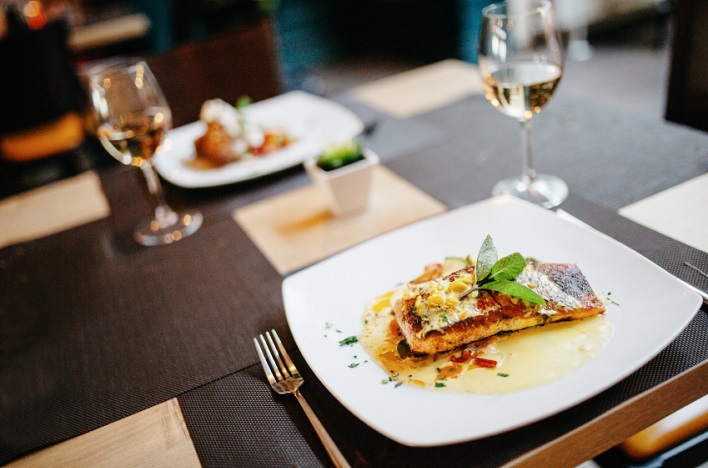After you make a sale, what do you do to encourage more business?
Next time you’re enjoying a relaxing meal in a fine dining restaurant, watch your server. You’ll probably observe six sales lessons that will help you get follow-up business from your customers, too.
Fine dining restaurants depend on the upsell, and they work to maximize each diner’s tab. Unlike casual dining servers who aim for quick table turns or fast food counter clerks who conduct rapid transactions, the fine dining server creates an experience that is conducive to buying.
Although diners are committed to purchasing, it’s the server’s job to enhance their dining experience and increase their tab. Good servers do this throughout the meal. Here’s how.
The Wine Service
The meal begins with a consultation, a sample and highly attentive service that could include recommending, selecting, opening and pouring drinks and checking customer satisfaction.
Lesson for all sellers: Start strong. The first impression is a lasting one. You’ll make more sales later if your buyer is highly satisfied with the first service and product you offer. Ask questions to understand your buyers’ preferences and needs. Then make suggestions that truly respond to what the buyer tells you.
The Specials
Servers offer mouth-watering descriptions and convey their personal preferences. They intimate which is a popular choice or a limited choice (due to seasonality or other factors). They elevate these choices above the standard menu items, even calling them “specials” to entice diners.
Lesson for all sellers: Offer something special, above and beyond the standard selection. Buyers like to have choices. Knowing there will be something novel each time they do business with you is a strong draw. If you can’t offer special products or services, make the experience with you something special and present it that way so the buyer anticipates the next experience.
The Appetizers
Servers ask, “What would you like to start with this evening?” This is an assumptive sale, setting an expectation that an appetizer will be ordered. Often, a second is offered or recommended.
Lesson for all sellers: Don’t think of the main item as the entire sale. Put together a “full meal” that starts with something more. Offer appropriate add-ons and enhance- ments for every buyer. When you do, use an assumptive approach.
The Sides
With an a la carte menu, servers recommend the appropriate number of sides per person or table. When the sides are included, they ask if different ones (often at an upcharge) would be preferred.
Lesson for all sellers: Additional enhancements, even though they cost more, round out the purchase and improve customer satisfaction. Any options you offer need to be presented in alignment with buyer preferences.
The Dessert
Servers offer dessert at a strategic time. They don’t wait until the meal has been completely digested and the feeling of fullness sets in. They offer dessert when the main course is barely finished, and the diner is still mindful of the quality and still immersed in the experience.
Lesson for all sellers: Don’t wait too long! Offer the next logical product, an extension or a renewal before the buyer is sated.
The Coffee, Dessert Wine, Digestif or Nightcap
Even dessert isn’t the end. The server continues to make the diner feel welcome, wanted and well-served. Diners know their every need will be met.
Lesson for all sellers: Let your buyers know that you’re in no hurry, that you value them and that you will stick with them even after the main purchase has been completed.
To encourage diners to return, restaurants provide a memorable experience along with a quality product. You can do the same and earn repeat business by applying these six lessons.

